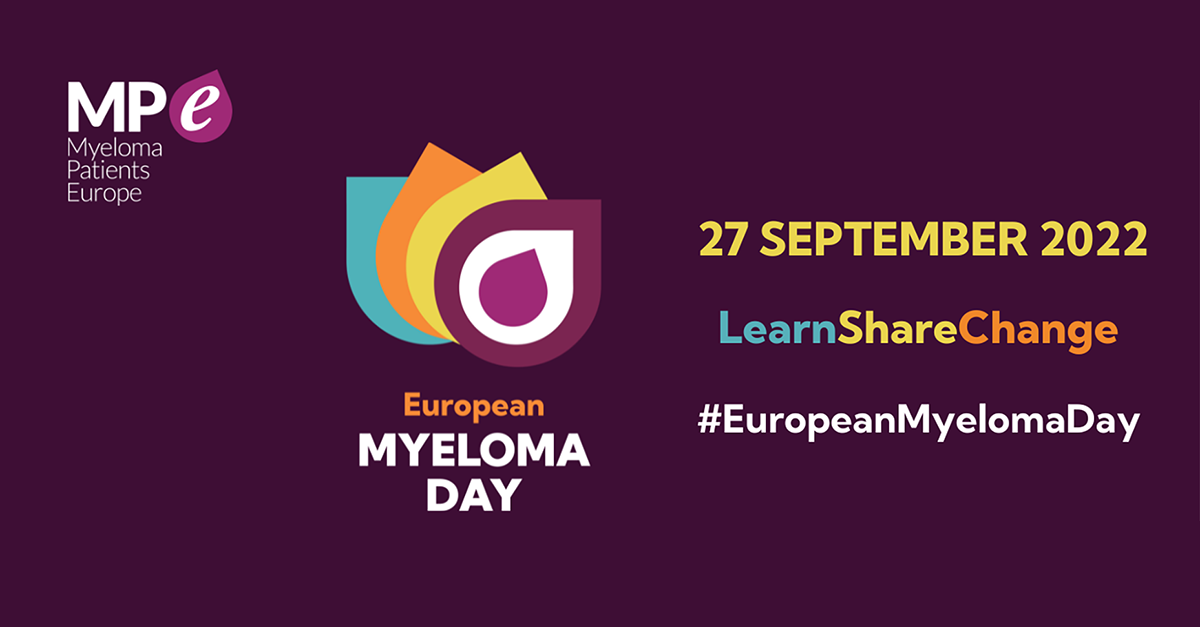Partner power: 5 ways collaboration can help us beat blood cancer

From medical professionals and scientists to regulators, colleagues and of course patients themselves, this month once again brings a welcome chance for everyone in the blood cancer community to recognise everything we have achieved together. A blood cancer diagnosis today no longer means the same thing as it did 10, even five, years ago – and that is something we can all be very proud of.
Personally, I’m especially looking forward to seeing Myeloma Patients Europe (MPE) lead the first European Myeloma Day later this month, concluding a Year of Action on Diagnosis that has seen game-changing strides in the timely diagnosis of multiple myeloma and AL amyloidosis in the region.
Yet despite all the positive progress, this annual milestone of Blood Cancer Awareness Month should predominantly be a moment for acceleration, not celebration. And for me, that comes down to collaboration. In fact, I would go as far as to say that anyone who thinks that working in isolation leads to success is wrong.
Here are five areas where I believe the power of partnership can help us go further, faster in making blood cancer a manageable, even curable, disease for the millions of patients and families it affects every year.
1. Data and RWE
Pooling real-world evidence (RWE) between different players in the blood cancer community can help increase our collective knowledge and understanding of the disease – something we ourselves have seen with the Haematology Outcomes Network in Europe (HONEUR). Set up by Janssen, it brings together universities, private hospital, registries, medical societies and other institutions that own large data sets of patients diagnosed with haematological malignancies or rare blood cancers. These shared insights are enabling us to work together to develop more effective tools and therapies for patients.
2. R&D, regulatory approval and access
Many patients still face delays in accessing the care they need and, often, this is time they simply do not have. More effective industry partnerships with academic institutions, and open dialogue with HTAs and regulators can help overcome this challenge. First by enhancing R&D and clinical trial design, and second by promoting better communication and an openness to evolving the drug approval process to get potentially life-changing treatments into the hands of the people who need them more quickly.
3. Patient engagement
Patients must always be at the heart of everything we do, so we must partner ever more closely with patient organisations to incorporate their needs and perspectives at every stage of the treatment cycle. This even includes the language we use – something the HTAi International Summary of Information for Patients (SIP) has recently sought to address. It aims to promote a common level of understanding of a disease and its treatments which, in turn, lets patients more easily advocate on their own behalf and engage in important discussions about their treatment. It was first trialled by Janssen in blood cancer and can be used as a document to support patients who are participating in HTA decision making – something we are wholeheartedly behind.
4. Digital innovation
While many of the groups mentioned so far have long been key stakeholders in the blood cancer community, as an industry we must also be open to collaborating with partners that have different, non-traditional backgrounds and expertise. This is especially true in the case of digital innovation. For example, the use of AI in drug discovery has the potential to totally transform the speed and efficiency with which we can unlock new treatments and bring them to market. But truly harnessing its potential will require the support of specialist organisations with the necessary digital and technical capabilities.
5. Internal operations
In most cases, the next wave of progress in blood cancer relies on our industry’s ability to enhance its own knowledge and expertise with the skills and capabilities of collaborators outside our business. Yet internally, we must also foster a true spirt of connection and partnership across functions, specialisms and geographies. From the lab to the supply chain, this is the only way to ensure we get the right medicine to the right patients at the right time.
As a blood cancer community, our job is to constantly find new, better ways to improve outcomes and quality of life for patients and their loved ones. And, of course, there is a long way to go if we are to achieve our common goal of beating blood cancer once and for all.
But with a collaborative, multi-stakeholder approach, I believe we can do it. In this month of reflection and recognition, let us therefore remind ourselves of what makes us all get up and go to work every morning. One day, we will have a world in which the words “you have blood cancer” are both less terrifying for patients to hear and less distressing for healthcare professionals to say.


